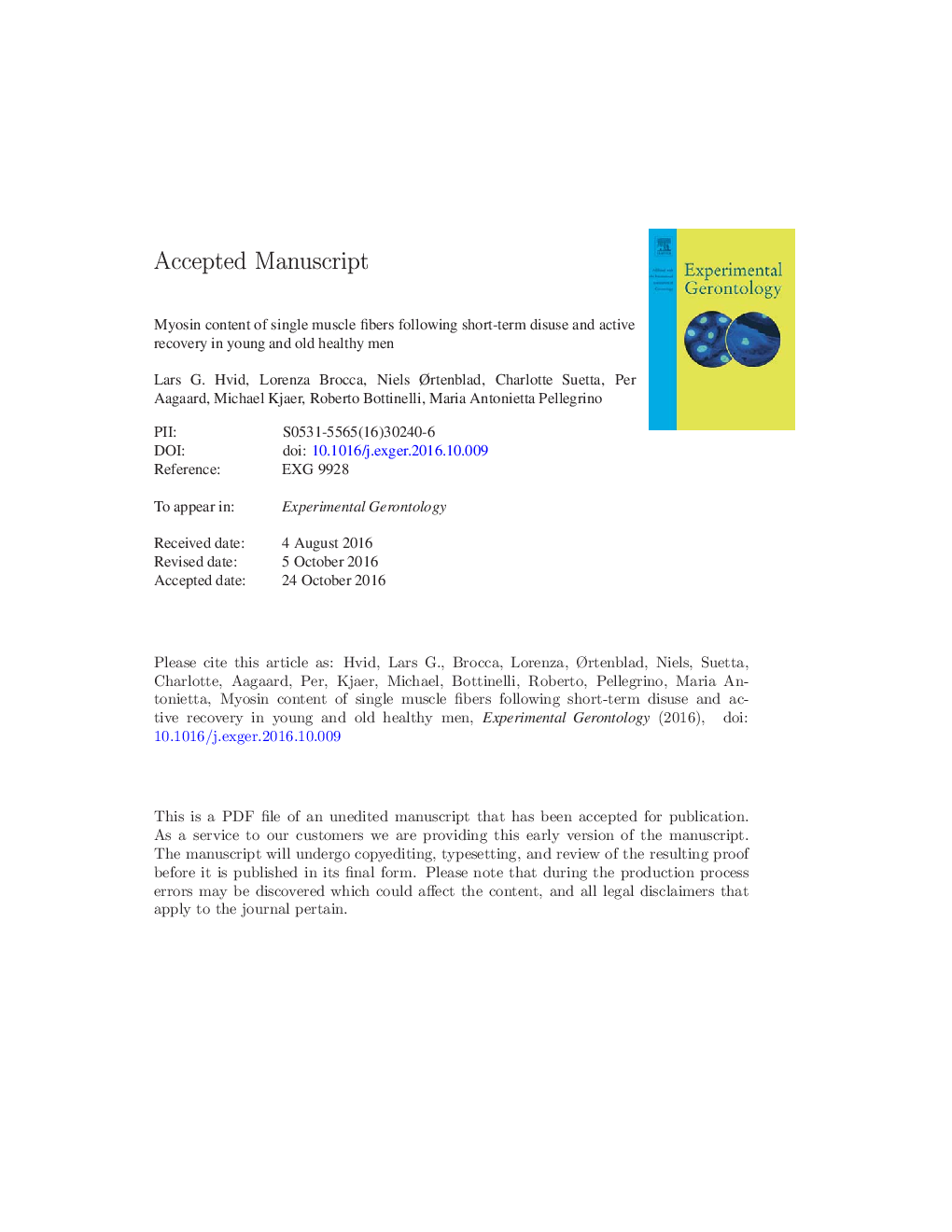| Article ID | Journal | Published Year | Pages | File Type |
|---|---|---|---|---|
| 5501492 | Experimental Gerontology | 2017 | 27 Pages |
Abstract
Short-term disuse and subsequent recovery affect whole muscle and single myofiber contractile function in young and old. While the loss and recovery of single myofiber specific force (SF) following disuse and rehabilitation has been shown to correlate with alterations in myosin concentrations in young, it is unknown whether similar relationships exist in old. Therefore, the purpose of the present study was to examine the effect of 14 days lower limb disuse followed by 28 days of active recovery on single muscle fiber myosin content in old (68 yrs) and young (24 yrs) recreationally physically active healthy men. Following disuse, myosin content decreased (p < 0.05) in MHC 1 (young â 28%, old â 19%) and 2a fibers (young â 23%, old â 32%). In old, myosin content decreased more (p < 0.05) in MHC 2a vs 1 fibers. Following recovery, myosin content increased (p < 0.05) and returned to pre-disuse levels for both young and old in both fiber types, with MHC 2a fibers demonstrating an overshooting in young (+ 31%, p < 0.05) but not old. Strong correlations were observed between myosin content and single fiber SF in both young and old, with greater slope steepness in MHC 2a vs 1 fibers indicating an enhanced intrinsic contractile capacity of MHC 2a fibers. In conclusion, adaptive changes in myofiber myosin content appear to occur rapidly following brief periods of disuse (2 wks) and after subsequent active recovery (4 wks) in young and old, which contribute to alterations in contractile function at the single muscle fiber level. Changes in myosin content appear to occur independently of age, while influenced by fiber type (MHC isoform) in young but not old.
Keywords
Related Topics
Life Sciences
Biochemistry, Genetics and Molecular Biology
Ageing
Authors
Lars G. Hvid, Lorenza Brocca, Niels Ãrtenblad, Charlotte Suetta, Per Aagaard, Michael Kjaer, Roberto Bottinelli, Maria Antonietta Pellegrino,
